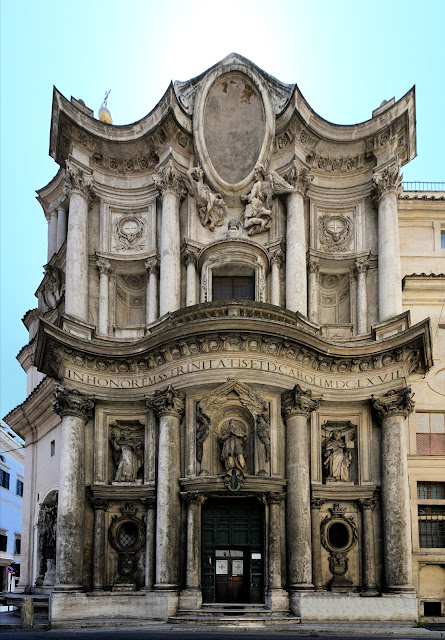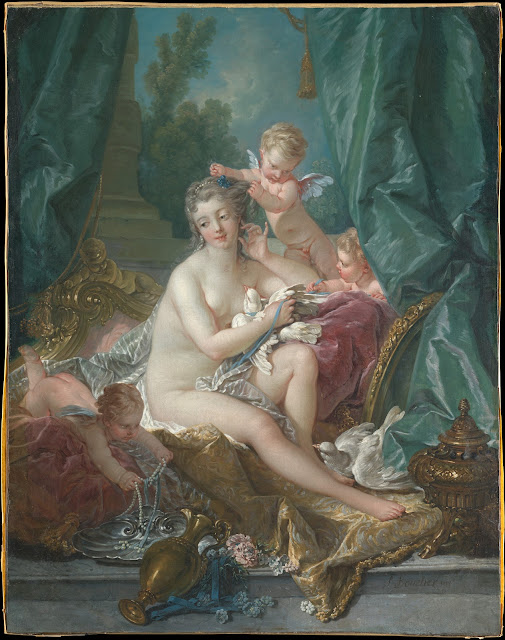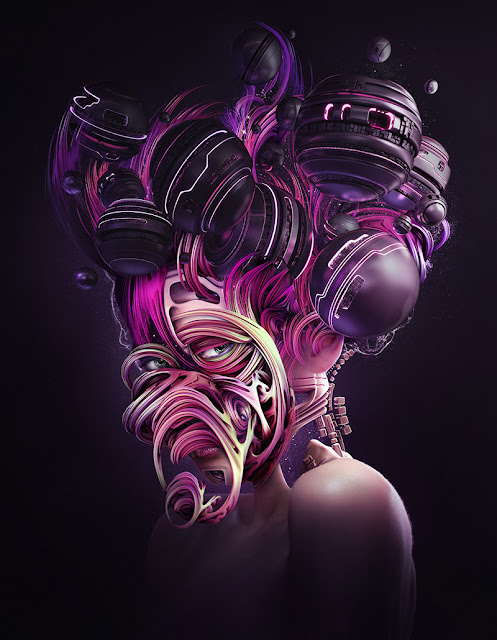Baroque, The Powerful Successor of the Renaissance: Francesco Borromini's San Carlino
Francesco Borromini
The Artist:
Francesco Borromini (1599-1667) was a brilliant architect living during the boom of the Baroque. Born Francesco Castelli in Bissone, Duchy of Lombardy (Italy), he got his start when his father sent him to Milan to learn stonecutting. There, he was trained in both architecture and sculpture, later running away to Rome (1620) to become a draftsman and stonemason in the office of Carlo Maderno.
Borromini plied his trade during the time of legends such as Caravaggio and Bernini, and while he was well-known, he never quite escaped Bernini's shadow. The two being rivals may have only worsened the temper of this already volatile man, yet Rome benefitted greatly from their need to outdo the other.
Though he was especially gifted, Borromini would be his own undoing, finding himself without a friend or patron at the end of his days. He took his own life after a bout of sickness, yet his works live on, and to this day are some of the most beautiful structures and sculptures in Rome.
The Art:
Located right off the busy streets of Rome, San Carlino (as it is referred to) was commissioned by the Trinitarian Order, whose teachings were centered around the Holy Trinity and were devoted to freeing Christian slaves. Borromini offered to design and build the church free of charge in order to launch his solo career after the death of Maderno. It was built using inexpensive materials, such as stucco.
The façade of the church stands at 20m (66ft) x 12m (39ft). Two concaves form the sides of the bottom, meeting in the convex in the middle, with religious sculptures set above the door. Three concaves ripple across the top, the middle set with a large medallion held up by angels. The eight columns stand tall in the undulating forms, used to elongate the small plot, bringing to mind waves in the ocean. The entire structure was built with divine geometry in mind, and Borromini was often criticized as a supposed heretic for his fondness for it.
A unique aspect of art in architecture is that it most often has function as much as form. First and foremost, architecture must be designed with the daily use of its patrons in mind, and San Carlino is no exception. It stands out on the tiny plot among the everyday city buildings, and even with so much flourish, it still manages to fit seamlessly into the space of such a grand city as Rome. A testament to Borromini's skill and artistry, the façade breathtakingly draws in visitors, the many curves and circles creating the aforementioned waves of textured stucco. Though it's not evident from the outside, the inside of the little church was cleverly designed to harness the power of natural light, yet more evidence of the artist's skill.
Even with dirt and grime covering its outer façade, San Carlino draws the eye of the curious observer. The geometric forms work together with the heavy drama of the building to pull the worshippers inside, the firm lines of this work reminding the viewer of the constancy and power of the church.
The stability of the cylindrical columns and the movement of the entablature above them create a feeling of unquestionable divinity. The Council of Trent made clear the need to create an image of the supremacy of the Church during the Counter-Reformation, and San Carlino does this brilliantly.
The sculptures are of the founders of the Trinitarian Church and St. Charles Borromeo, a cardinal who attended the Council of Trent and was recognized as a pivotal figure in the movement. He helped create significant reforms within the church and worked tirelessly to aid the people of Milan and abroad.
The entire structure is designed to reflect the majesty of the Church, telling the people of Rome to trust in the authority that had been in question since the start of the Reformation. The Council of Trent was adamant that churches and clergy make themselves more accessible to their followers, from revisions in religious education to building churches meant to draw in their wayward followers and reaffirm the truth in their message. Only Catholicism could offer a direct line to God, and attaining true salvation meant paying fealty to the Pope.
Comparison:
The heavy drama of the Baroque is on full display at San Carlino, a testament to the emotional turmoil wrought by the continent-wide destruction of the Thirty Years War. By comparison, the chapel Tempietto, built in 1502 and designed by Donato Bramante, is a much quieter presence. Tempietto was built on a circular plane with surrounding columns--a very modest chapel when compared to San Carlino. Regarded as "one of the finest examples of the High Renaissance" (Britannica), the classically inspired design is in stark contrast with the movement of Borromini's church. Tempietto's entablature follows a circular geometry, a grand piece built on the supposed sight of St. Peter's crucifixion that is meant to humble the observer. Borromini's work achieves a more interpersonal divine reverence than Bramante's, the movement and complex geometry of San Carlino creating a sense of drama that the architects of the High Renaissance shied away from.
“Charles Borromeo.” Wikipedia, Wikimedia Foundation, 11 Oct. 2023, en.wikipedia.org/wiki/Charles_Borromeo.
Editors of Encyclopædia Britannica. “Tempietto.” Encyclopædia Britannica, Encyclopædia Britannica, inc., www.britannica.com/topic/Tempietto. Accessed 12 Oct. 2023.
Extended Learning Institute (ELI), Northern Virginia Community College, et al. “Art History II.” Tempietto | Art History II, Khan Academy, courses.lumenlearning.com/suny-arthistory2/chapter/tempietto/. Accessed 12 Oct. 2023.
Harris, Dr. Beth, and Dr. Steven Zucker. “Francesco Borromini, San Carlo Alle Quattro Fontane, Rome.” " Francesco Borromini, San Carlo Alle Quattro Fontane, Rome, 18 Nov. 2015, smarthistory.org/borromini-san-carlo-alle-quattro-fontane/.
Otto, Christian F. “Francesco Borromini.” Encyclopædia Britannica, Encyclopædia Britannica, inc., 21 Sept. 2023, www.britannica.com/biography/Francesco-Borromini.
“San Carlo Alle Quattro Fontane.” Wikipedia, Wikimedia Foundation, 27 Sept. 2023, en.wikipedia.org/wiki/San_Carlo_alle_Quattro_Fontane.
Stokstad, Marilyn, and Michael Watt Cothren. “Chapter 22: Seventeenth-Century Art in Europe.” Art History: Portable Edition, Fourth ed., Vol. Four, Pearson/Prentice Hall, Upper Saddle River, NJ, 2011, pp. 716–717.
“Thirty Years’ War.” Wikipedia, Wikimedia Foundation, 11 Oct. 2023, https://en.wikipedia.org/wiki/Thirty_Years%27_War.




Comments
Post a Comment